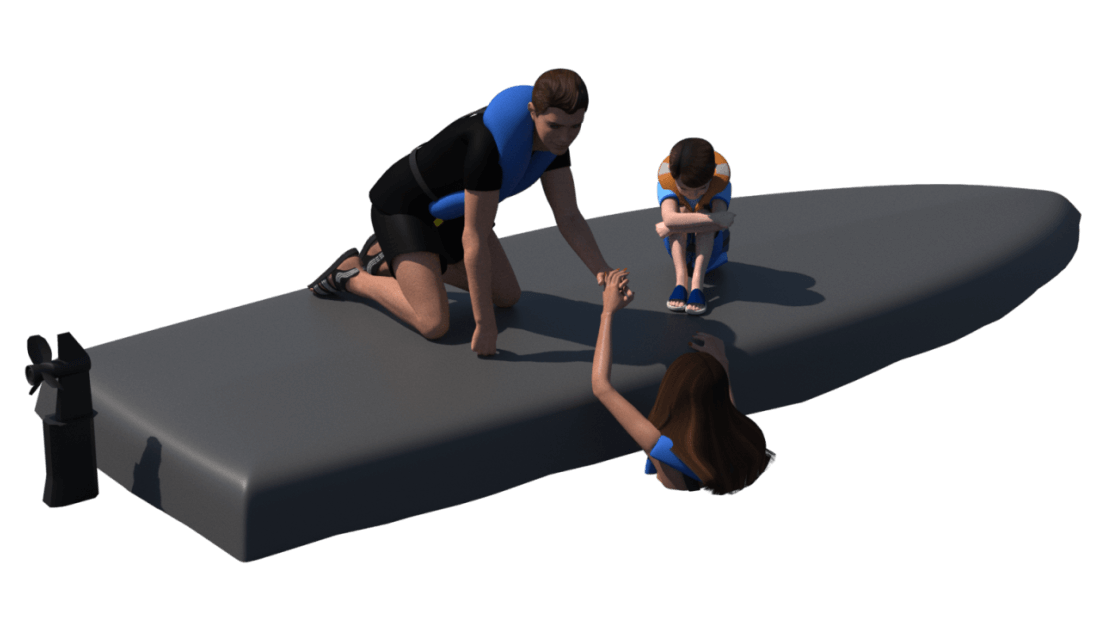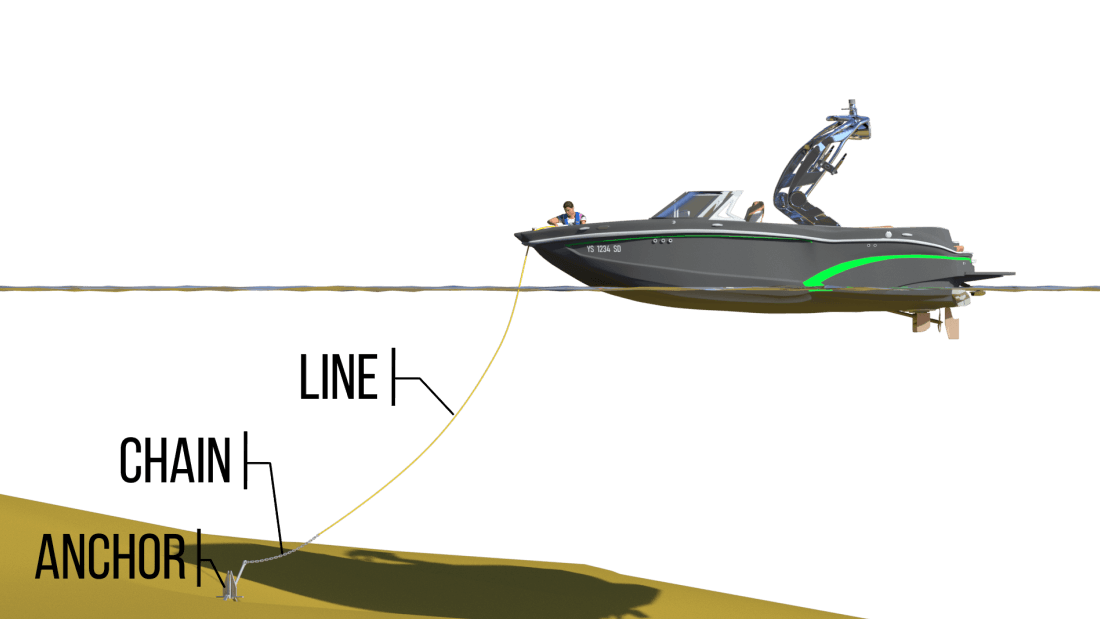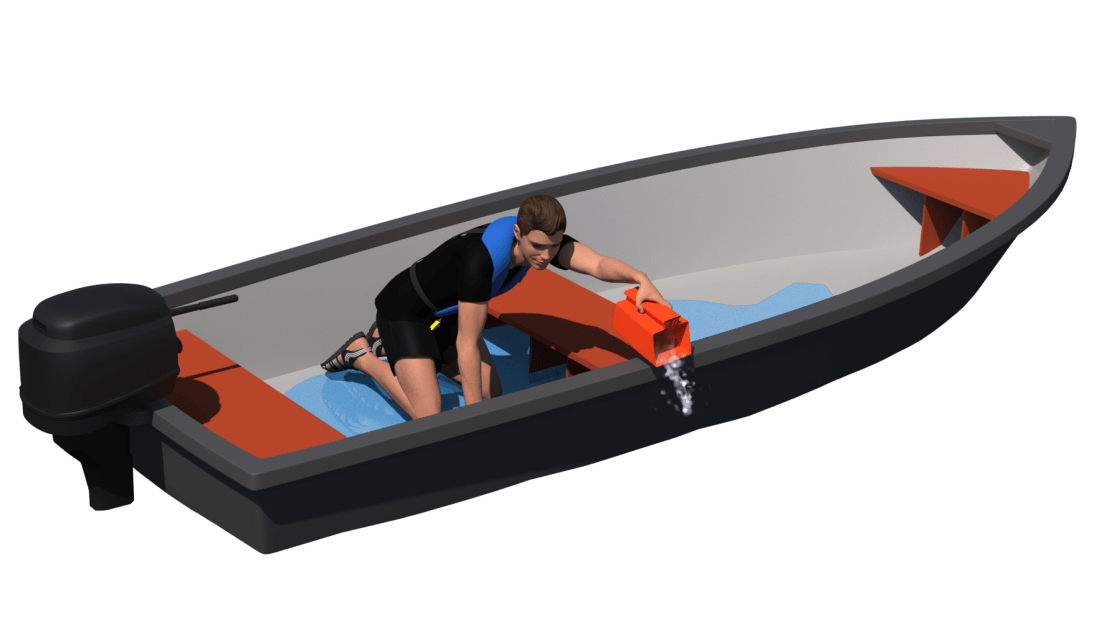Boating Emergency Situations Capsizing - Running Aground - Man Overboard- Boat leak
What should you do if your boat capsizes?
-
The first thing you should do when a vessel capsizes is, check the people onboard to make sure no one is injured.
-
Ensure that everyone puts on a personal flotation device;
-
Keep as close to the boat as possible. Try to climb on it. (A capsized boat is easier to see than a person in the water)
-
Do a head count of those who were on board;
-
Use or display signals to show distress and need of assistance.
If your boat capsizes and you are more than 100m from shore, don’t try to swim to shore!

What should you do to help prevent a capsizing?
-
Stay low and centered in your boat
-
Always maintain three points of contact on the boat
-
Anticipate all waves and aim the bow into them.
Waves can be a major factor in capsizing, especially if they are unexpected. On approaching waves you should reduce your speed and approach the wave at a 45 degree angle allowing the boat to ease up and over the wave rather than smashing head on. Never travel parallel to the wave as you risk capsizing the craft.
What should you do if a person falls overboard?
-
Sound the alarm and immediately become the look-out, which means keeping constant sight of the person who has fallen overboard;
-
Another person will throw something buoyant with a buoyant heaving line;
-
The pleasure craft operator must close-in on the person who has fallen overboard, while at the same time slowing down;
-
The operator will approach the person on the wind-ward side;
-
The operator will shut off the motors as soon as the person has grasped the line;
-
Recover the person overboard with a reboarding device or a lifting harness.

To ensure the safety of the pleasure craft’s passengers, it is important to inform each passenger of where the safety equipment is stored onboard as well as each person’s task in an emergency situation, and the movement of the pleasure craft. Furthermore, it is important to practice the safety procedures so that the passengers become familiar with them. In the case of a real emergency their chances of survival will increase dramatically.
What is running aground?
A grounded boat describes a vessel that touches the bottom and gets stuck.
When you run aground in an inboard/outboard vessel, you should shift the weight away from the grounded area of the hull, lift the outdrive part-way then shift into reverse.
What steps should you take after running around?
-
Check the people onboard to make sure no one is injured.
-
Ensure that everyone puts on a personal flotation device;
-
Assess any damage that may have occurred.
-
Is the boat taking on water? If so, find the source of the leak.

What should you do if your engine brakes down and you start drifting?
If your engine dies and you start drifting toward rocky shore... would you know what to do? Here’s the best course of action:
-
Alter the speed of the craft;
-
Investigate the problem;
-
Correct the problem if possible; or
-
Use signals to show distress and need for help.
The operator should service and maintain the pleasure craft and its equipment on a regular basis to make sure that they work properly at all times, thus reducing the probability of breakdowns.

What to do when your boat springs a leak?
First, find the source of the leak in the hull or of the flooding. Is there a breach in the hull, such as in the water cooling system? Is an underwater device, such as the engine’s water cooling system, defective? Is the rear bailer of the pleasure craft properly closed? Once you have discovered where the water is entering the vessel, stop the leak or the source of flooding if possible.
If there is a breach in the hull below the waterline, use any type of plug (a piece of wood cloth) to close the hole. If it is a crack caused by hitting or rubbing up against rock, you can use an epoxy that hardens or catalyzes underwater. If the hole is on the water line, you must heel (incline the boat) the pleasure craft in order to get the crack out of the water. When the water leak has been sealed, bail the accumulated water from the hold or other compartments of the pleasure craft by using hand-held bailers, manual pumps or bilge pumps. Use or show distress signals to signal that you are in need of assistance. If necessary, use channel 16 with a "MAY DAY" signal and/or use pyrotechnic signals. The pleasure craft operator must always have on board a hull repair kit and tools. A temporary repair will ensure sufficient time in order to get back to shore and stop any excess flooding.
